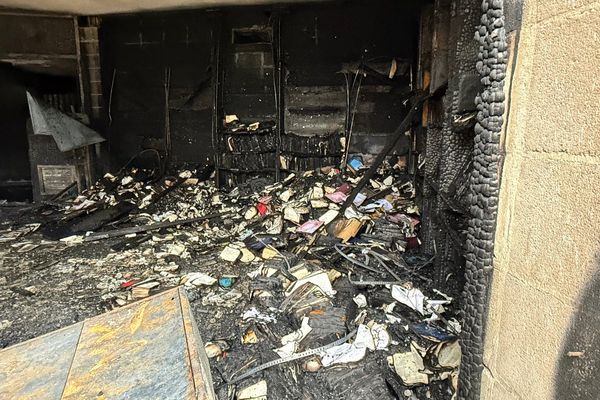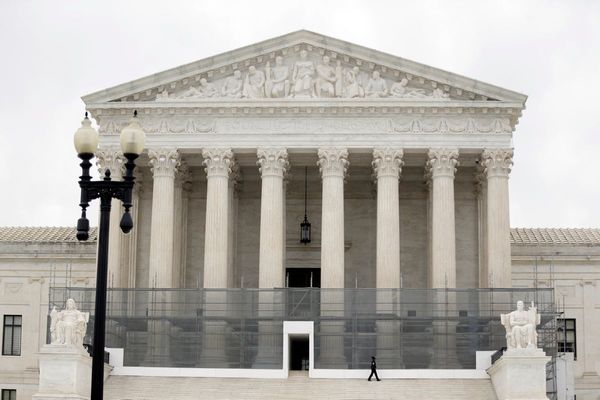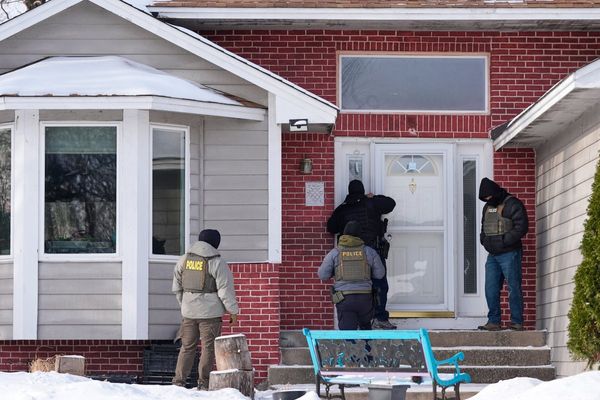MIAMI — Miami has to spend at least $3.8 billion in the next 40 years to keep the city dry from rising seas, according to a draft of the city's long-awaited and newly released stormwater master plan.
That will buy a hundred new mega stormwater pumps, miles of 6-foot tall sea walls, thousands of injection wells and a network of underground pipes so big and wide even the tallest NBA player could stroll through them without bumping his head.
Even then, it won't be enough to save every neighborhood. And it's not because it's too expensive, although that's part of it.
"There are some areas where you run the model now and you plug in the recommended pump stations and outfalls and wells, you will find minimal to no change with hundreds of millions of infrastructure," said Chris Bennett, the city's deputy chief resilience officer. "There are cases where your engineering solutions just won't provide you any benefit."
The answer, the report suggests, is to retreat from those places and armor the rest, to the tune of nearly $4 billion. The report is also a Florida Keys-style acknowledgment that despite billions of dollars (if you can even get them), it's impossible for the government to preserve everything. It also hints at a sci-fi future that could come decades after these investments: floating cities and converting roads to canals.
Miami Mayor Frances Suarez announced the release of the new report, the product of consultant CDM Smith, in a Thursday press conference at City Hall.
"The most common question I get asked is whether Miami is going to be here in 50 years, whether it's going to be here in 100 years," he said. "This is the beginning of having a comprehensive plan to answer that question in the affirmative."
When this project started two years ago, planners wanted to know how to keep the city dry for the next 50 years. At the time, that meant building for the 18 to 30 inches of sea level rise expected by 2070.
Then the projections went up. Now, South Florida is planning to reach that level of sea rise by 2060.
John Englander, an oceanographer and author of Moving to Higher Ground, lauded the city's ambitious plan to engineer itself out of the worst flooding impacts.
"The infrastructure needs to change starting now, you can't wait for the water to arrive," he said. "This isn't a choice. If the water is rising, we will adapt or we will move."
The first decision Miami planners had to make was what level of protection the city needed, known as a level of service.
They ended up with two options: the first, called a 1-in-5 year storm, would produce about 7 inches of rain in a day. The second, called a 1-in-10 year storm, would produce a little under 11 inches of rain in three days.
For comparison, Tropical Storm Eta, which flooded parts of already soggy South Florida last fall and turned downtown Brickell into a car swallowing lake, dumped between 5 and 7 inches of rain in Miami over two days.
Building to the 10-year storm standard, obviously, would offer more protection than the 5-year standard. But it's much more expensive, and in some cases, planners said, all that extra work and money wouldn't make that much of a difference.
The plan estimates that building up the entire city to the 10-year standard could cost $5.1 billion, compared to the $3.8 billion for the 5-year standard.
"The goal is 10-year level of service anywhere we can, but the minimum standard is a 5-year level of service, which in some neighborhoods is a significant improvement to what we have now," said Miami Chief Resilience Officer Alan Dodd.
Consultants at CDM Smith digitized tens of thousands of paper documents, fact-checked them on the ground and loaded them into a powerful model that shows what the city looks like under different levels of flooding, or with different engineering solutions.
Dodd, showing off a map of the city's flooding in 50 years if nothing is done, points out that the neighborhoods along the Miami River, the northeast corner of the city and the far western edges are deep indigo.
"You're talking about a foot and a half of water on the street if we do nothing. These are the areas we have to address if we want to keep living here," he said.
So what kind of solutions does $3.8 billion buy?
To start, at least 93 more massive stormwater pumps, compared to the 13 the city has today. They work to stop water from swamping city streets and yards. To move that water around, the pipes under the city will need to expand from about 3 or 4 feet wide to 8 feet wide. And in some cases, pump stations may need two 8-foot pipes just to contain the water.
But those pumps have to send the water someplace. In this plan, that answer is the aquifer. The master plan calls for thousands of injection wells across the city to shoot the water deep below the city.
Researchers have suggested that as flood-prone coastal cities like Miami Beach and Miami pump and pipe their way dry, the water they collect and splash back into the bay will carry pollutants that will kill even more fish and seagrass.
The master plan suggests that to cut down on that pollution, Miami also has to get a lot greener. More parks and landscaped areas designed to hold a lot of rain will lessen the burden on the city's network of pipes and pumps, and they'll also help clean the water before returning it to Biscayne Bay, a protected water body already suffering from too much pollution.
In residential neighborhoods, it means swapping out the grassy swales in front of homes people use for parking with landscaping designed to suck up and clean a few inches of water — like the "bioswale" Miami Beach is experimenting with.
The city will also need to invest in more of what Bennett calls "giant Brita filters" at pump stations where water quality is especially bad, like near heavy industrial areas. The huge concrete boxes contain removable filters that go beyond the regular filters at pump stations that remove pieces of trash, oil and grease and filter out pollutants like nitrogen, phosphorus and bacteria found in poop.
"We will not be having impacts on the Bay," Dodd said.
One solution the master plan doesn't suggest, at least in the dramatic way Miami Beach has done, is road-raising. Bennett said elevating streets before homes and buildings can lead to more flooding on private property.
"You don't want to do that, push the water out of the right of way and into someone's home," he said.
Several of the solutions, like more one-way valves on ocean outfalls that allow water to drain out but stop it from flooding back in during high tides, or the giant filter boxes at pump stations, will require a lot of work to keep them trash free and functioning.
That maintenance cost isn't included in the $3.8 and $5.1 billion price tag, and Bennett said Miami could be forced to contract with a private company to get the job done.
"We just can't staff the city with that many people," he said.
Even at the lower end, the estimated cost of adaptation is four times the city's annual budget, and there's only about $175 million left in the Miami Forever Bond dedicated to sea level rise projects.
To make up the difference, the report suggests the usual suspects: grants and funding from the state and federal government, as well as partnerships with private companies.
It also suggests upgrading impact fees, a one-time tax on new construction, which could prove politically unpopular in developer-friendly Miami. And it could mean higher costs to residents too, especially in neighborhoods most likely to flood.
"If you live in a highly vulnerable area can we, should we, do we need to assess a higher fee for the additional services?" Bennett asked.
The first slate of projects, which would be completed within five to 10 years, is expected to cost $545 million, and the report said they'll have to be done at the cheaper, lower protection level because of "limited funds." The estimated cost for those same projects at the higher level of protection is $911 million.
The other neighborhoods included in the first group are all over the city, from Morningside to Melrose, Brickell to Jose Marti Park.
The report also looks into the future, at engineering solutions that won't be needed in the next 40 years but could be important later in the century, like floating neighborhoods and converting streets to canals.
It also mentions the "eventual requirement" of a series of flood walls and water barriers at the mouths of rivers and canals, the unpopular part of the Army Corps of Engineers' $6 billion plan to protect the county from future storm surge.
The Corps' proposed strategy would also include billions for floodproofing important buildings like hospitals and water treatment facilities, as well as cash to elevate homes — both popular proposals that, as Miami's plan reflects, are necessary for the long-term survival of the city.
Miami-Dade hasn't yet made a final decision on whether to allow the plan to move forward as it stands so the Corps can get it approved and funded, or whether to ask for more time. That decision is expected in the next few months.







